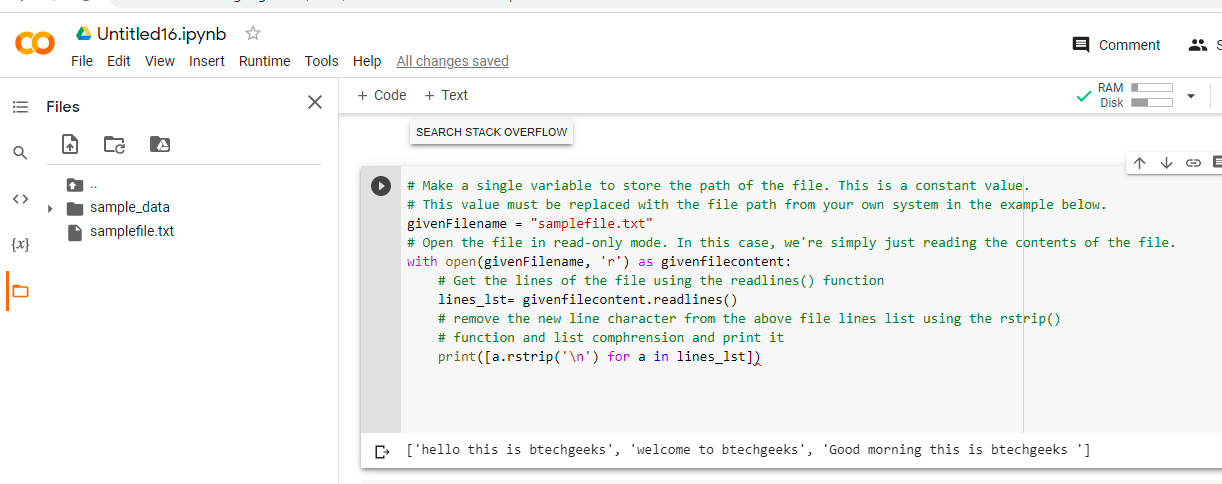Files in Python:
Python remove new line: One of the most important subjects for programmers and automation testers is Python file handling (also known as File I/O). It is necessary to work with files in order to write to or read data from them.
Also, if you didn’t know, I/O operations are the most expensive processes where a programme can go wrong. As a result, you must use extreme caution while implementing file processing for reporting or any other reason. Optimizing a single file action can help in the creation of a high-performing application or a reliable automated software testing solution.
Consider the following scenario: you’re planning to construct a large Python project with a large number of workflows. Then it’s unavoidable that you don’t make a log file. You’ll also be handling the log file’s read and write activities. Debugging huge applications with log files is a terrific way to go. It’s usually better to consider a scalable design from the start, as you won’t be sorry later if you didn’t.
Given a file, the task is to remove newline characters from a given file in python
- Python Program to Count Number of Digits in a Text File
- How to run Python scripts
- Python Interview Questions on File Manipulation
Program to Remove Newline Characters from a File in Python
Strip new line character python: Below is the full approach for removing a newline character from a given file in python
Approach:
- Make a single variable to store the path of the file. This is a constant value. This value must be replaced with the file path from your own system in the example below.
- Open the file in read-only mode. In this case, we’re simply reading the contents of the file.
- Get the lines of the file using the readlines() function and store it in a variable.
- Remove the newline character from the above file lines list using the rstrip() function and list comprehension and print it.
- The Exit of Program.
Below is the implementation:
# Make a single variable to store the path of the file. This is a constant value.
# This value must be replaced with the file path from your own system in the example below.
givenFilename = "samplefile.txt"
# Open the file in read-only mode. In this case, we're simply just reading the contents of the file.
with open(givenFilename, 'r') as givenfilecontent:
# Get the lines of the file using the readlines() function
lines_lst= givenfilecontent.readlines()
# remove the new line character from the above file lines list using the rstrip()
# function and list comprehension and print it
print([a.rstrip('\n') for a in lines_lst])
Output:
['hello this is btechgeeks', 'welcome to btechgeeks', 'Good morning this is btechgeeks ']
File Content:
hello this is btechgeeks welcome to btechgeeks Good morning this is btechgeeks
Explanation:
- The file path is stored in the variable ‘file name.’ Change the value of this variable to the path of your own file.
- Dragging and dropping a file onto the terminal will show its path. The code will not run unless you change the value of this variable.
- The file will be opened in reading mode. Use the open() function to open a file. The path to the file is the method’s first parameter, and the mode to open the file is the method’s second parameter.
- When we open the file, we use the character ‘r’ to signify read-mode.
- Here we iterate through all the lines of the file using For loop.
- We use strip method to remove all the newline characters from the file.
Google Colab Images:
Files and Code:


